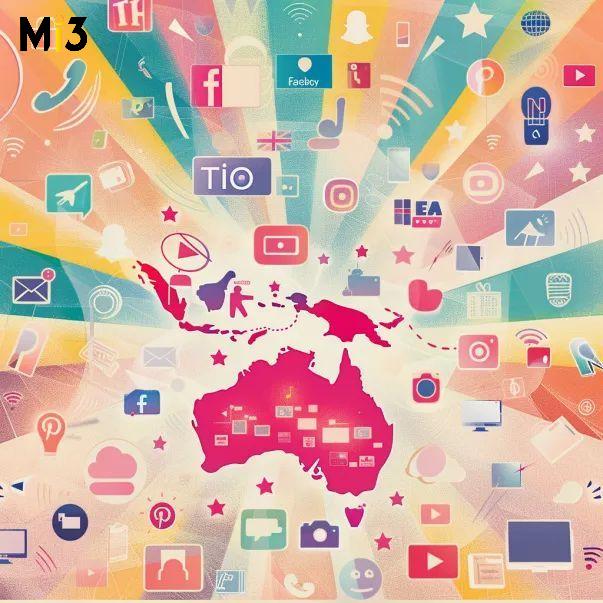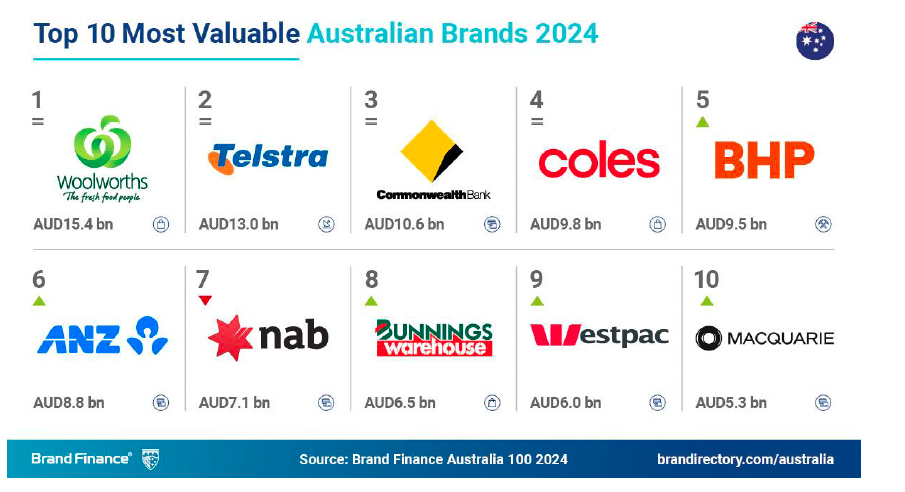‘Hidden buyers’ stalling 40% of B2B deals: latest LinkedIn-Edelman data confirms old school marketing, lead-gen and content playbook now defunct

What you need to know:
- A new report from Edelman/LinkedIn under the B2B Thought Leadership Impact Report banner has found more than 40 per ent of B2B deals stall due to internal misalignment within buying groups.
- A key reason is because of the influential role ‘hidden buyers’ – those with less indepth knowledge or a service or product but hugely significant in whether a company buys it or not – are playing in decision making.
- According to LinkedIn, about 610 decision makers are now behind a B2B buying decision on average, and 17 meaningful interactions are needed to win them all over.
- The Edelman / LinkedIn report found bold, cutthrough thought leadership content is absolutely essential to getting hidden buyers to buy into your offering – the more oriented around a business need or issue they didn’t know they had, and alignment to company culture, the better.
- Recognising the need to grab attention, Flintfox International’s CMO Cath Brands says it went beyond a research study on volatile tariffs to instead create a tariff calculator and provocative campaign. These both score strongly with these hidden, nontech buyers influencing purchasing, she says.
- F5 is also seeing the need to go further with its content play, and has been pushing the envelope on cuttingedge tech insights to get its brand further up the CXO food chain.
- But even as B2B brands are being encouraged to invest more in brand building and positioning, a new threat is arising: More LLMs being used in the vendor selection process.
The newly released, joint Edelman and LinkedIn B2B Thought Leadership Impact Report, ‘Invisible Influence: Unlocking the Power of Hidden Buyers’, has found more than 40 per cent of B2B deals stall due to internal misalignment within buying groups. A common reason why? Hidden buyers – or in layman’s terms, internal non-tech stakeholders – who significantly influence business purchases even if they’re not the primary users of a product of service.
Hidden buyers also don’t have the in-depth knowledge of a specific service or product. Commonly, they’re line-of-business function representatives – finance, operations, legal, compliance, procurement. Yet they’re very good at putting a massive spanner in the works. The typical number of people participating in a buying group sits around 6-10 decision makers.
It’s a message that the B2B illuminati have been hammering home over the last couple of years. (Green Hat’s Apac study here, B2B Institute and Bain study here, 6Sense study here). In short, the old playbook no longer works, and probably never did. Brands need to influence a much broader set of people much earlier to stand a chance of even making the shortlist, product benefits are massively outweighed by trust and whether that extended dark buyer list has any familiarity with the brand name – and most leads are actually pretty low value.
IBM chief marketing and communications officer, Miki Luong, put this new state of play bluntly in the recent CMO Awards special report, ‘The journey to business growth: How CMOs are rethinking customer engagement’: It’s no longer just the CIO buying tech anymore.
“It used to be the CIO makes a decision, then it gets deployed down to everyone,” Luong told Mi3. “These days, the CIO won’t make that decision, it’s generally a team sport, and instead of selling to one person it’s a whole committee. It’s people within the organisation, then it’s the advisors and influencers. So to be effective you have to try and address as many of these groups as possible.”
Flintfox International CMO, Cath Brands, is another B2B marketer grappling with the surprise hidden buyer behind decision-making. “One minute you’ve got someone who raises their hand on the website for a demo and they’re brimming with excitement; you think you’ve found your champion and decision maker,” she comments.
“But then, just as you’re wrapping up the call, they say, ‘great, can we do this again with finance?’. Then it’s operations. Then procurement. Before you know it, the cast keeps expending and suddenly the person you’ve never met before holds the power to stall the whole decision.”
In the pricing platform provider’s case, uncovered hidden buyers stretch from compliance – “freaking out about data and AI protection laws”, says Brands – to the CFO “weighing the long-term bottom line against the short-term fix”.
“What’s interesting is that hidden buyers are less focused on features or cost, and more on the risks of disruption or change management,” Brands continues. “It’s no longer about FOMO in the tech sales cycle, it’s about FOMO as ‘fear of messing up’. Hidden buyers are often the ones who can list a thousand reasons why not to move forward, because the last thing they want is to be the person who made the wrong call.”
F5 director of marketing APJ, Jade Meara has also felt the impact of hidden buyers increasing and gaining complexity since the term first came out of Forrester five years ago. The trigger is technology becoming more ubiquitous and enmeshed across lines of business. F5 provides application delivery and security platforms.
“Identifying these stakeholders, what departments they live in and what they key concerns are, are all becoming increasingly important to technology vendors, especially in the platform space where we play,” she says. From networking to security and development teams, the list thanks to AI now includes legal, governance, operations, finance, marketing and the overall c-suite.
One minute you’ve got someone who raises their hand on the website for a demo and they’re brimming with excitement; you think you’ve found your champion and decision maker.
But then, just as you’re wrapping up the call, they say, ‘great, can we do this again with finance?’. Then it’s operations. Then procurement. Before you know it, the cast keeps expending and suddenly the person you’ve never met before holds the power to stall the whole decision.
What sways hidden B2B buyers
The 2,000 US management-level professionals responding to Edelman/LinkedIn survey agree. So the report went on to explore the behaviours and influences impacting these hidden buyers and helping to turn them into advocates.
There are several similarities between hidden and target buyers to consider upfront. Firstly, hidden buyers have a preference for strategic, thought leadership content over traditional marketing or product information pitches (63 per cent versus 64 per cent of overtly targeted decision makers who spend more than one hour per week on consuming thought leadership). More than half (55 per cent) are also using thought leadership as part of their vetting process, compared to 56 per cent of target decision makers.
The report also revealed hidden buyers actively discover, consume and evaluate thought leadership much like target buyers. This makes high-quality, thought leadership-styled content a “Trojan horse” that can build credibility and drawn these shadow lurking individuals into the light, the report authors stated. This is important, as seven in 10 hidden buyers have little or no interaction with sales teams from selling companies.
Hidden buyers also favour more human, stylish, straightforward content, with 95 per cent agreeing strong thought leadership makes them more receptive to sales and marketing outreach. In addition, 64 per cent trust thought leadership content over marketing materials and product sheets when assessing capabilities and competencies.
According to the Edelman / LinkedIn report, hidden buyers are also swayed by bold, perspective-shifting ideas that grab their wandering attention – six in 10 see this manifesting through style or unique format. The hallmark here is uncovering challenges or needs these prospects hadn’t recognised: 91 per cent of hidden decision makers see this as thought leadership versus 81 per cent of target decision makers, and 86 per cent want fresh perspectives and ideas that challenge their assumptions.
Another notable finding across hidden buyers was the vendor being the safest choice is the least important factor in making a final purchase decision. Instead, they’re incredibly oriented to the business point of view. For instance, 85 per cent cited an understanding of their business’ challenges and needs as the deciding factor, followed by understanding the trends affecting their industry (76 per cent). But hidden buyers go further, with 79 per cent saying they are more likely to advocate for proposals from companies that consistency produce high-quality thought leadership versus those who do not.
As a consequence, the report claimed the right content can turn hidden buyer scepticism into advocacy for the less-obvious choice or larger brand.
Tariff cut through
“At the end of the day, content is still king, because information is power across the entire buyer journey,” Brands agrees.
But shaking up the format has definitely been needed at Flintfox. An example Brands points to is publishing a tariff calculator as the US tariffs war began reshaping global trade, over simply publishing more research.
“We paired it with a bold paid campaign called ‘Tarrified’. That kind of provocative, challenger-brand approach pulled in hidden buyers we’d never have reached with a sales deck or product sheet,” she says, estimating 80 per cent of the people that have downloaded or interacted with any of its tariff content are hidden buyers “and not what we would consider our ‘ICP’, based on the job title they provide to download the content”.
“What is interesting however, is the conversion rate of our ICP to the next stage of the funnel is 4x vs the HB. That’s why content in B2B needs to be approached in a more typical B2C campaign style, with multiple ‘creatives’ as is has to do double duty in servicing both the targeted and hidden buyer,” she says. “So while the pricing team might love a whitepaper, the finance hidden buyer needs something more tangible, like the tariff calculator. Just like the ice-cold Coke ad at the bus stop is designed to prompt immediate consumption by anyone, and supermarket Coke advertising is more designed towards the family shopper and features a bigger multi-pack.”
More broadly, Brands says Flintfox has intentionally been moving beyond single-channel ‘thought pieces’ into formats that bring data, tools and stories together. Turning complex industry issues into business-critical insights for finance, ops and pricing teams has been another winning tactic, along with proof-of-concept offers so all those on the buying group can experiment with their own teams.
F5 has been on a similar journey. An example Meara highlights is its State of Application Security report, which has been published for over a decade. In 2025, this evolved to the State of AI Strategy report with an AI Readiness Index.
“As AI and applications become critical to business success and are increasingly discussed at the board level, we’ve also been investing more in CXO thought leadership, with great care taken to hone bold ideas and thought projects via a global CXO program,” Meara explains. Topics such as cyber resilience, AI governance and quantum resilience are considered quite forward-looking, she argues, compared to most BAU discussions.
“But we find executives are being pressed about these matters at a board level, so early discussion in vital,” she says.
Yet even as B2B marketers come to grips with this relatively new phenomenon, Meara points to another highly disruptive counter trend afoot: Growing impact from large language models (LLMs) being employed to power vendor selections.
“Buyers are now using LLMs like ChatGPT, Claude or Gemini to summarise vendor blogs and analyst reports instead of relying on organic search, word of mouth, or analyst firms’ advice. This makes it a key priority of technology vendors to make sure their content is LLM discoverable.”
Buyers are now using LLMs like ChatGPT, Claude or Gemini to summarise vendor blogs and analyst reports instead of relying on organic search, word of mouth, or analyst firms’ advice. This makes it a key priority of technology vendors to make sure their content is LLM discoverable.
Brand building imperative
The Edelman / LinkedIn report had one stat, however, that potentially confuses the message on whether investing in building a strong brand presence is the be-all end-all in B2B. It found 53 per cent of both target buyers and hidden buyers agreed if thought leadership is high quality, then brand recognition matters less.
But LinkedIn head of marketing solutions APAC, Matt Tindale, tells Mi3 this shouldn’t stop B2B brands from swinging the pendulum away from a fixation on leads and performance and towards strategic brand building. For Tinsdale, these data points in fact add more weight to why B2B businesses should get more brand savvy. Thought leadership plays a huge role in building brand, and brand has never been more important to a company’s growth, he says.
“As attention becomes increasingly scarce, B2B brands must work harder to be among the top three considered for purchase,” Tindale says, adding “around 17 meaningful interactions” are required to close a B2B deal today.
“For instance, when CEOs show up on LinkedIn, they’re not just representing the business, they’re helping shape how it’s perceived. People want to hear directly from decision-makers, and when a CEO shares a post or video, it brings a level of authenticity that cuts through. It humanises the numbers, gives context to the decisions, and brings the company’s values to life. And it works – CEO posts on average receive eight times more impressions and four times more engagement than the average post.”
Such an argument has been made comprehensively by the Ehrenberg-Bass Institute and B2B Institute’s joint How B2B Brands Grow paper. Brand building is essential to attaining high mental availability, the whitepaper posits. Mental availability is the breadth and depth of perceptions of a brand. High mental availability is when that person has high awareness of the brand and knows what it does, and what it stands for. According to Ehrenberg-Bass, a higher level of mental availability makes people far more likely to buy. It’s also led to the 95-5 rule for B2B, which states only about 5 per cent of customers are in market at any one time. So telling over selling should be the primary focus for B2B marketers, the argument goes.
“B2B buying decisions rarely rest with a single person and deals stall when the buying committee isn’t aligned. That’s why brand building is so essential: It gives every stakeholders, even the ‘hidden’ influencers behind the scenes, the confidence to say yes to your brand,” Tindale argues. “Building ‘collective confidence’ across the entire buying group requires bold, memorable content that engages all of them.”
“We’re seeing Australian B2B marketers embrace this – 90 per cent agree that capturing audience attention is their biggest worry, and 76 per cent say they need to leverage creative marketing tactics to stand out in today’s competitive landscape. By investing in strong brand campaigns and high-quality thought leadership, B2B brands can unite the full buying committee and even turn quiet, behind-the-scenes influencers into vocal champions – which will be absolutely key to accelerating deals in the year ahead.”





